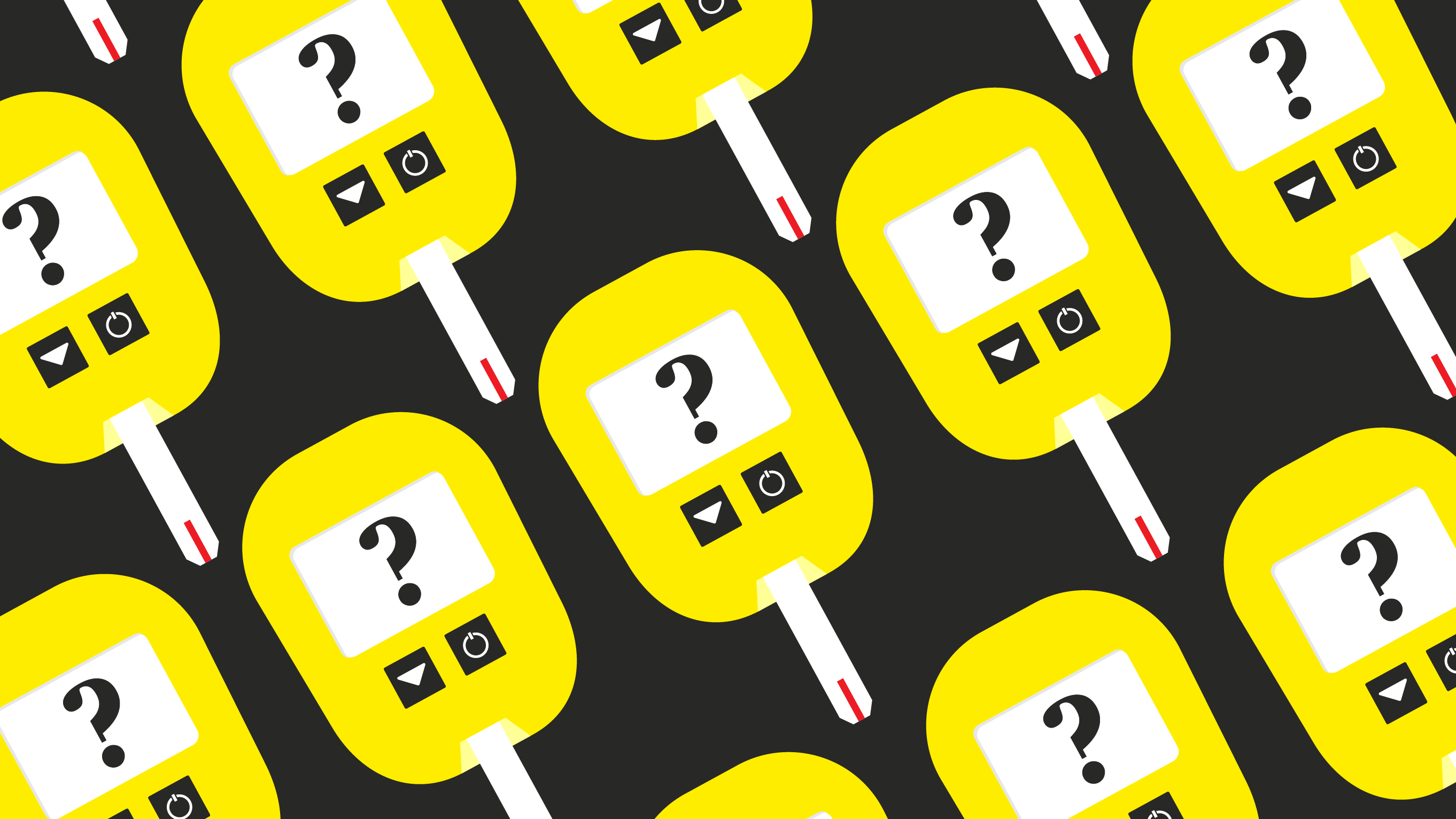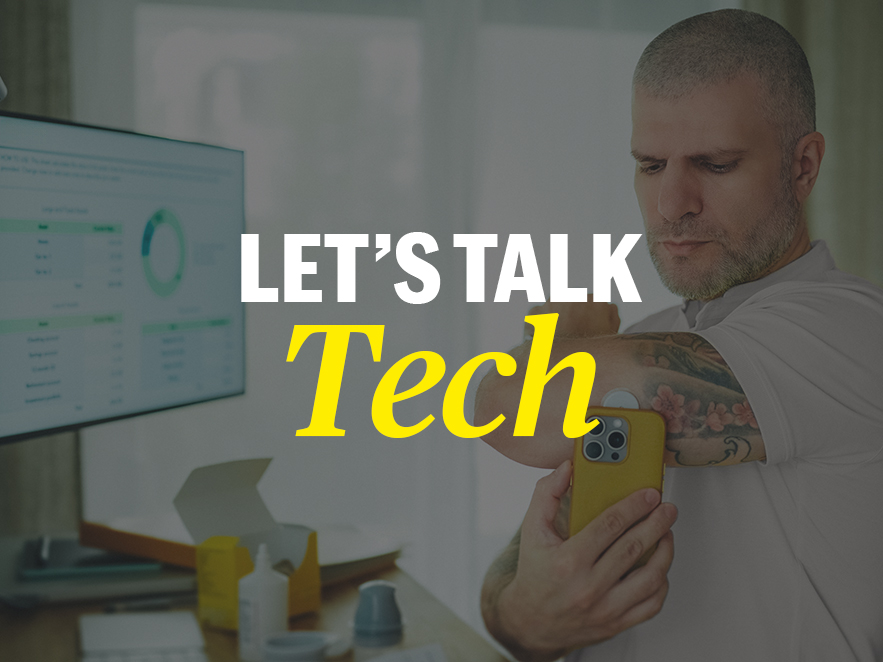Equanimity in Mindfulness—How to Step Into Diabetes With Our Body and Mind
Written by: Sam Tullman
5 minute read
February 14, 2024
What is equanimity, how is it different from mindfulness, and what does it have to do with how you manage your diabetes?
Editor’s Note: This article was written by Kō Sam Tullman of the DiabetesSangha. Beginning on April 21, 2024, Sam and fellow DiabetesSangha facilitator Brooke Cassoff will be hosting a 5-week, online course in Meditation and Diabetes. The course has been specifically created for people with T1D by Brooke and Sam (who both have T1D). For additional information on this course and DiabetesSangha’s free, daily, guided meditations, visit www.diabetessangha.com.
“I am the owner of my conditions,* born of my conditions, enmeshed in my conditions, and live this way supported by my conditions. Whatever conditions I cause, be it for good or for ill, I inherit as my own.”
– The Fifth Remembrance, Siddhartha Gautama
* “Conditions” above is an alternate translation of the word karma, for the purposes of the everyday reader.
People get the wrong idea about karma.
In modern times—especially in the West—we tend to think of karma as either:
- Somebody having something good or bad coming to them because they did something good or bad, or
- A highly mystical system associated with rebirth in South and East Asian religious traditions, which keeps some kind of spiritual bank account across lives.
But let me ask you – did you deserve to get type 1 diabetes (T1D) ?
Did I deserve to get T1D?
Deep down, are we somehow holding onto an idea that having T1D is our fault?
Or, that our life’s suffering, disappointments or frustrations are on some level a reflection of us?
What is Karma in Life—With and Without Diabetes?
Karma need not be a mystical exercise, spiritual debt hanging over us or justification for our pain.
Karma is everything all around you and within you.
Karma is reality playing itself out right now. Karma is also:
- Your blood sugar
- Your moods
- Your thoughts
- The sounds of the room you are in
- The movement of your eyeballs reading this article.
Feel your karma for a moment as you read this.
Feel this moment passing by. It’s not your enemy—it can actually be a great friend.
That is, if you choose to take it on fully.
What is This Moment?
In this moment, your entire past is represented—sometimes subtly and other times very obviously.
As remarkable as it is, this is no metaphysical truth—no truth beyond our conception. It’s a truth of physics, neuroscience and logic.
Each little part of each moment imprints on us in ways we do and don’t notice, and nudges us into life circumstances which further imprint on us as they place us into this next moment.
With your entire life here—in this moment—the way you tend to it defines your experience of life, as well as the circumstances of your next moment.
Tending to This Life: What Is Equanimity?
“We need to be present to what is, regardless of the outcome we want. We prepare for life as it unfolds, not our ideal image of it. That is, literally, the only path forward.”
—Angel Kyodo Williams
For our purposes in mindfulness and compassion training, it is not enough to define equanimity as the New Oxford American Dictionary defines it—which is “calm and composed.”
I’m not saying that equanimity cannot absolutely help us find calm and composure—it can! True equanimity, however, is about looking life in the face—without flinching or turning away.
If that sounds intense, that’s because—it is!
But, it’s also not as aggressive as it might sound.
This deeper equanimity requires us to gently, carefully and knowingly look our life in the face. Much like a grandparent gazing over the face of their grandchild, knowing every inch but seeing it freshly each time—whether it’s an angry, bruised, smiling or sleeping face.
If we don’t take a gentle approach to really seeing our life, we actually often can’t see it at all. The realities of life can feel quite harsh, and most of us have built up armor-like psychological mechanisms to put between ourselves and life. These armors keep us distracted, checked out, overly-optimistic, stuck in trying to get it right—or please others—and confused about what we are even unhappy about.
This armor also keeps us from:
- Having an honest experience of reality, and
- Effectively responding to honest experiences
Gentleness in our observation of our conditions helps us set some of this armor down.
How to Train Equanimity
In practicing mindfulness, we train our capacity to look without assumptions.
In practicing compassion, we train our capacity to look gently, without armor.
When we are not able to look—or when we look harshly, callously, or hyper-optimistically rather than gently and without assumptions, problems ensue.
For example:
- We ignore the signals our body is sending about blood sugars, or other needs.
- We delay our current happiness—though it is always accessible to us—for some imagined future happiness that can only be reached by changing the way things are.
- We spread bad feelings to others in our interactions – psychology and neuroscience research has shown extensively how true this is!
- We get so wrapped up in positivity trips that we fail to really see or be supportive of the struggles of people we care about—not to speak of our own struggles, which may be seeping in beneath the armor of toxic, saccharine positivity.
What Parts of Diabetes Have You Refused to Face, and What Has Been the Cost to You and Others?
Mindfulness and compassion are learnable qualities. In fact, by nature of being a human, you’re probably much more skilled in them than you may imagine!
And, we all have a long way to go in stabilizing and fostering more of these qualities, so that we and everything we touch may be less and less harmed by the things we avoid.
In this way, we positively impact our karma–and the karma of those around us.
In this way, we become a master navigator of our own karma, and of our entire life.
If you’re motivated to start on this path or continue on it, please join in with the DiabetesSangha for any of our live meditations @ www.diabetessangha.com.
Practices will include:
Shorter practice: Hearing Silence, Breathing Silence
Longer practice: Feeling Tones

Author
Sam Tullman
Beyond Type 1 is the largest diabetes org online, funding advocacy, education and cure research. Find industry news, inspirational stories and practical help. Join the 1M+ strong community and discover what it means to #LiveBeyond a diabetes diagnosis.
Related Resources

Hyperglycemia—or high blood sugar—can sneak up on you, whether it’s from a missed dose, a...
Read more

Curious about how to join a diabetes clinical trial? If so, good on ya’, because...
Read more

Diabetes clinical trials pave the way for how we manage and treat type 1 and...
Read more

